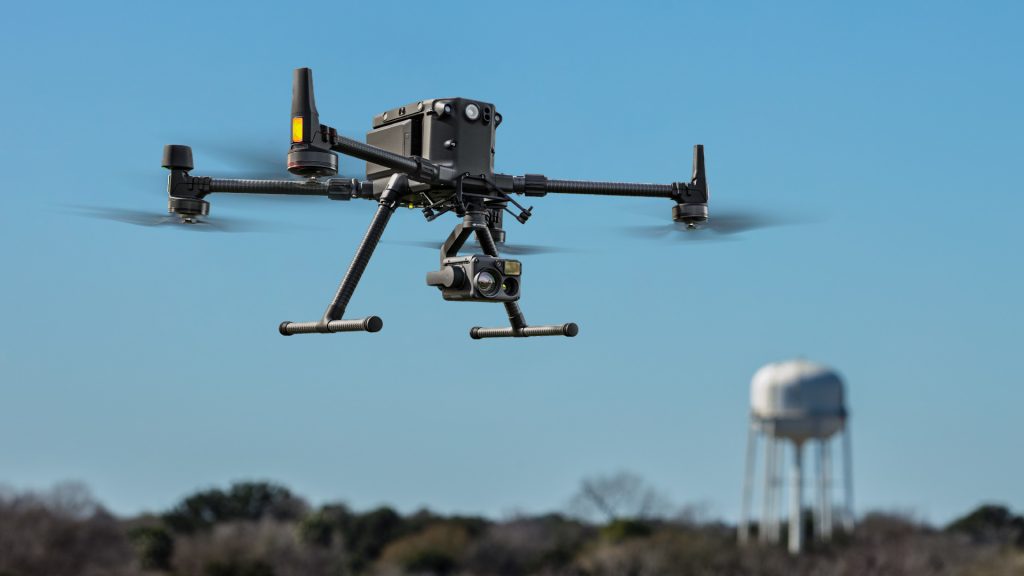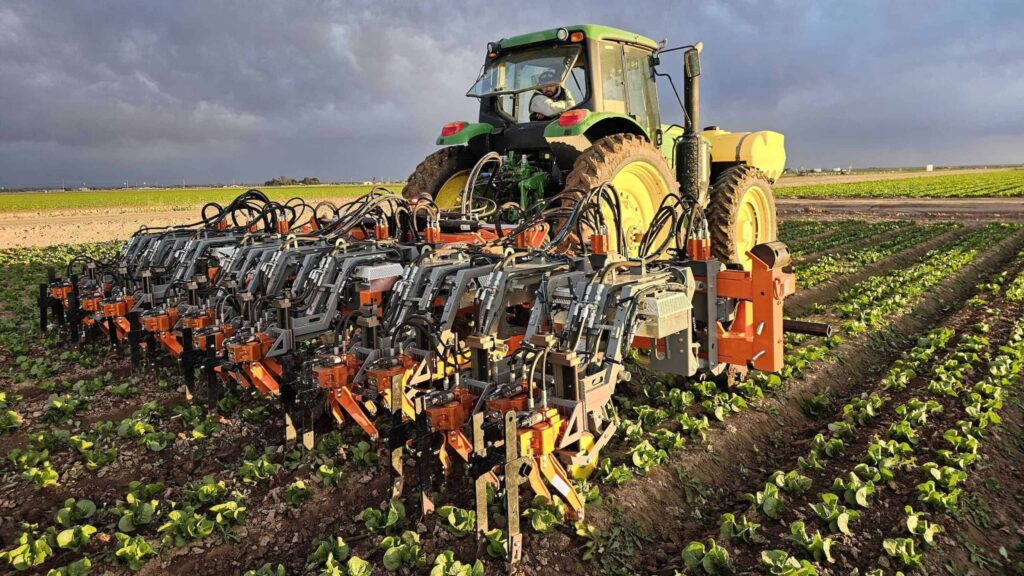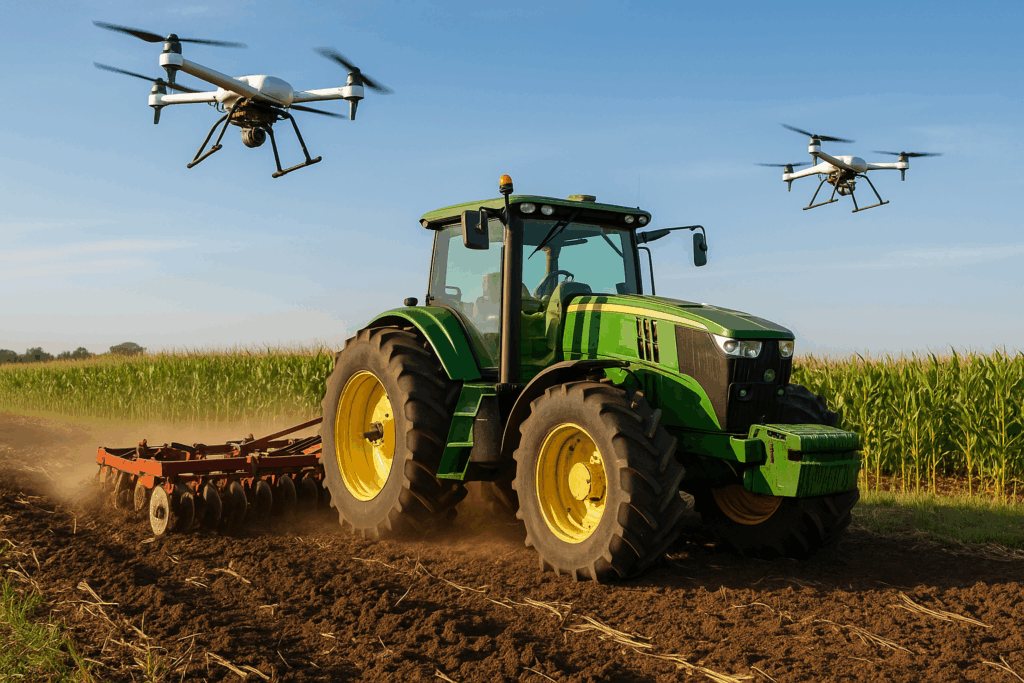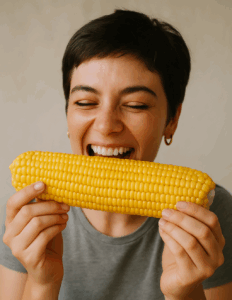From Cornfields to Code: How Technology is Revolutionizing Agriculture
Angie Kellen, Director, Client Services, Open Sky Communications

Source: Open Sky Communications using ChatGPT
Growing up in Illinois, weekends at my grandparents’ dairy and corn farm are some of my most cherished memories. My mom, who spent her childhood surrounded by over 200 acres of crops and livestock, would bring us to the farm where we’d enjoy long afternoons, many times joined by our cousins. With all 13 of us converging on the farm, we were riding tractors, helping with chores, and picking apples out in the ‘back 40’ (acres). This always resulted in Grandma baking several pies for dinner. Back then, farming was hard. As a kid I saw first-hand how hard it was. We got to play ‘farmer’ for a weekend, but in reality, it was hands-on work and dependent on a combination of experience, intuition, and the randomness of the weather. Fast forward to today and farming is undergoing a radical transformation, blending the natural world with cutting-edge semiconductor technologies. As someone working around semiconductor innovations, I’ve been fascinated to see how this same technology is now powering the next wave of agricultural change. In this blog, I’ll explore how precision farming and new technology paired with artificial intelligence (AI) are shaping the farms of the future.
Precision farming or precision agriculture is the use of digital technology to monitor and manage crop production with pinpoint accuracy. Instead of treating entire fields uniformly, farmers can now manage micro-zones based on detailed information about soil properties, moisture, nutrient levels, and more. With tools like GPS-guided tractors, satellite imagery, drones, and IoT sensors, today’s growers can optimize seed placement, fertilizer application, and irrigation to suit each square meter of land. This “right place, right time” strategy results in higher yields, lower costs, and more sustainable operations. According to Reuters, “in the U.S., on a trailing 12-month basis, precision agriculture registered $1.82 billion in deal value, with the ‘robotics and smart field equipment’ sub-sector seeing 48.5% value growth.”
At the heart of precision farming are four guiding principles. First, variable rate application enables farmers to adjust the amount of seeds, fertilizers, and chemicals based on local field conditions. This helps to reduce waste while improving efficiency. Second, data-driven decision making replaces reliance on guesswork with accurate insights from sensors, drones, and analytics. These tools detect patterns that aren’t visible to the human eye. Third, site-specific management focuses on treating each area of the field individually based on its precise characteristics, optimizing yield potential across the entire operation. Lastly, resource efficiency ties everything together by minimizing the use of inputs like fertilizer, water, and pesticides, saving money and promoting sustainability.
Today’s precision agriculture is supported by a suite of technological innovations. GPS and satellite navigation are foundational, enabling tractors and combine harvesters to move through fields with near-perfect accuracy, reducing overlap and increasing efficiency. These systems are accurate to within a few centimeters. IoT sensors play a critical role in tracking environmental and soil conditions such as moisture, pH levels, nutrient density, and weather. Many of these sensors are biodegradable and communicate with edge computing systems or cloud platforms to provide real-time data back to farmers. Projects like IoT4Ag are pioneering these biodegradable sensors to further reduce environmental impact.

Drone providing aerial imaging over a field. Source: JOUAV.com
Aerial imaging through drones offers another dimension of insight. Equipped with Red, Green and Blue (RGB), multispectral, or hyperspectral cameras, drones can fly over fields and detect crop stress, disease, or weed growth early—long before symptoms become visible to the naked eye. Companies like Gamaya have developed drone systems that use hyperspectral imaging to monitor plant health and predict yield. Meanwhile, satellite imagery is used to analyze broader patterns such as biomass accumulation and rainfall distribution.
All of this information flows into farm management software platforms that integrate sensor readings, weather forecasts, and historical yield data into user-friendly dashboards. Farmers can use these tools to generate prescription maps and make detailed plans for seeding, fertilizing, and irrigation. Platforms like John Deere Operations Center are at the forefront of this software integration.
Robotics is becoming an increasingly important part of the modern farm. Autonomous tractors and harvesters can navigate fields without human operators, using GPS and AI to steer and adapt to changing conditions. In addition to large machinery, there are specialized robots like the Vulcan from FarmWise Labs. This robot uses computer vision powered by machine learning to differentiate between crops and weeds to remove unwanted plants mechanically, which eliminates the need for herbicides and reduces chemical usage. Here is a short video to let you see how this robotic weeder works.

Vulcan Robotic Weeder. Source: Fall Line Capital
AI serves as the analytic engine that drives precision agriculture. According to Farmonaut, “Over 60% of agriculture startups in 2025 will focus on AI-driven solutions for sustainable food production and supply chains.” AI takes in enormous volumes of data from satellites, sensors, and historical records to provide insights that would be impossible to derive manually. AI systems can detect early signs of disease, locate pest infestations, identify nutrient deficiencies, and determine optimal irrigation schedules.
Drones powered by AI can autonomously survey fields, collect data, and process it in real time to flag areas that need intervention. Ground-based robots use convolutional neural networks (CNNs) to identify and remove weeds with remarkable precision, cutting herbicide use by as much as 97 percent. One standout innovation is the “See & Spray” system from Blue River Technology, a wholly owned subsidiary of John Deere, which targets herbicide only where needed, reducing waste and environmental harm.
AI also excels at making sense of time-series data from soil moisture sensors, temperature logs, and weather forecasts. These insights are used to automatically adjust irrigation and fertilization, improving consistency and conserving resources. Deep learning models trained over multiple seasons can forecast crop yields with remarkable accuracy, guiding planting schedules and logistical planning. Reinforcement learning enables autonomous machinery to refine their performance across different terrains and tasks, making them increasingly adaptable.
Adoption of AI in agriculture is growing rapidly. According to InsightAce Analytic, “the market for AI-powered precision farming reached $776 million in 2024 and is projected to grow to $4.76 billion by 2034.” This market includes software platforms, sensing technologies, robotics, and autonomous systems. In real-world applications, vineyards are using AI-guided tractors to optimize spray paths and reduce operator fatigue, while smallholder farmers in Kenya have nearly tripled coffee yields using AI-guided recommendations for pest control and fertilization.
Precision farming and AI bring a host of benefits. These technologies reduce the need for chemical inputs, conserving money and protecting the environment. Smart irrigation conserves water, a vital resource in arid regions. Enhanced crop quality and higher yields lead to greater economic returns. Real-time monitoring provides early alerts, enabling farmers to act before problems escalate. Replacing guesswork with data-driven decisions results in more reliable and consistent outcomes over time.
However, significant challenges still hinder broad adoption. The initial cost of acquiring precision farming tools—such as drones, sensors, software, and AI-enabled equipment—is high, especially for smaller operations. Technical complexity is another barrier; interpreting data and managing software platforms requires training. Many rural areas still suffer from poor internet connectivity, limiting the effectiveness of cloud-based tools. Data ownership, security, and interoperability between systems from different vendors also remain unresolved concerns.
Progress is being made to address these barriers. Affordable entry-level tools such as mobile apps and compact GPS systems make precision farming more accessible to smallholders. Government initiatives and grants are being introduced to expand broadband infrastructure in rural areas. Meanwhile, industry groups are pushing for standardization of data formats to improve system interoperability. As these challenges are addressed and costs continue to drop, AI-powered precision farming will shift from being a luxury to a standard agricultural practice.

The future of integrated farming systems. Source: Open Sky Communications using ChatGPT
Looking to the future, farming systems will become more integrated, with all technologies—drones, satellites, sensors, robotics, and predictive models—working together on a single platform. Unified dashboards will provide real-time decision support and allow autonomous machines to make live adjustments to watering, fertilizing, and pest control. The concept of digital twins, virtual simulations of entire farms, will allow growers to test planting dates, irrigation schedules, and crop rotations virtually before implementation.
Nanoscale technologies are also on the rise. Embedded nanosensors will monitor moisture, disease, and nutrient levels at sub-centimeter accuracy. Genetic tools like CRISPR will produce crops designed to communicate directly with sensors and machines, enabling seamless automation. These developments will create a dynamic, interconnected ecosystem where seed, soil, machine, and software cooperate in harmony.
This technological transformation also advances global sustainability. AI-guided practices reduce fertilizer runoff, pesticide overuse, and water consumption. Energy use is optimized through efficient logistics and precision equipment routing. Farms will increasingly track and reduce their carbon footprint, contributing to larger climate goals. Precision agriculture is no longer about maximizing profits alone, it’s about the protection of land, water, and community well-being.
With my roots in farming and my career covering various high-tech sectors, I see how the principles of engineering and data science are converging with the traditions of agriculture. The intuitive decisions my grandparents once made by feel are now being refined and amplified by sensors and AI. Where once we scanned the sky for clouds, we now forecast rainfall with satellite data. Where we drove tractors and meandered down corn rows, they now move on their own with centimeter precision. If you are interested in seeing more of these amazing Ag Tech machines from around the globe, check out this video from Smart Tech.

Source: Angie Kellen
Precision agriculture represents the intersection of past and future, tradition and innovation. It brings together the values I grew up with—hard work, protection and respect for nature—with the technologies I work with today. As global food demand grows and environmental pressures mount, precision farming stands out as a critical solution. It’s efficient, sustainable, and deeply adaptive.
Whether you’re an engineer, a grower, or someone who just loves a fresh ear of corn, now’s the time to pay attention to what’s happening in Ag Tech. It’s a ‘field’ where semiconductor logic meets soil biology—and the harvest will benefit us all.